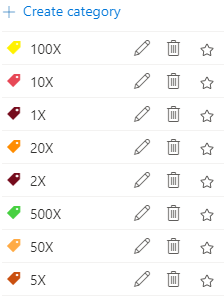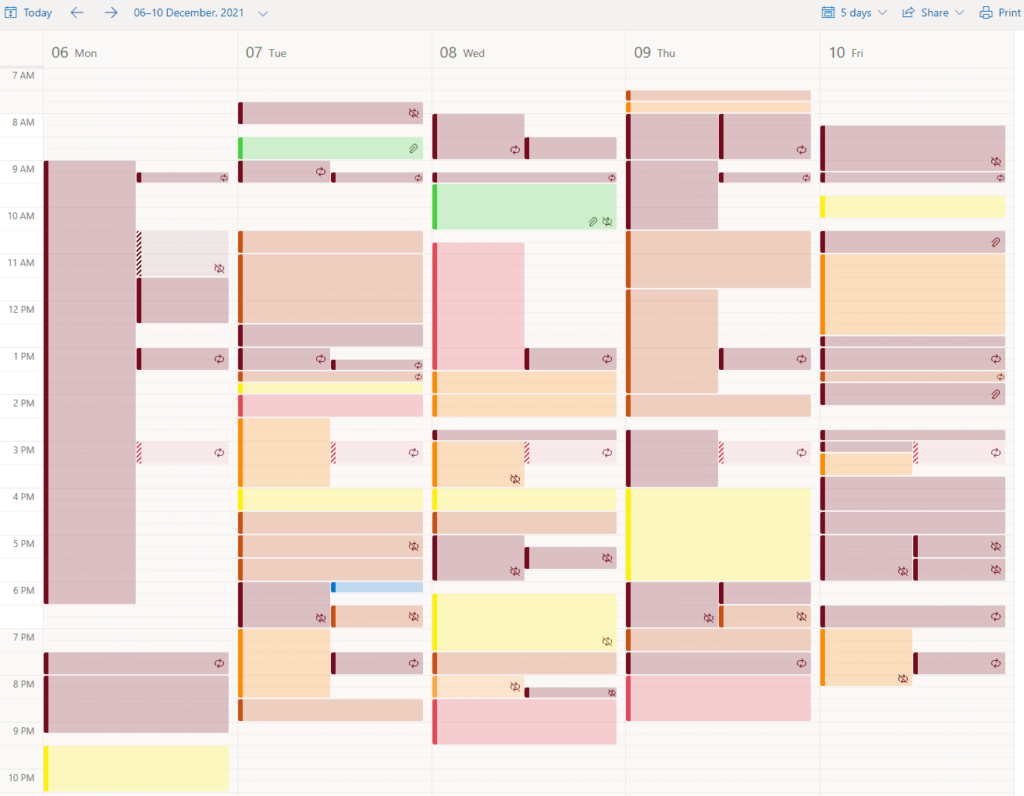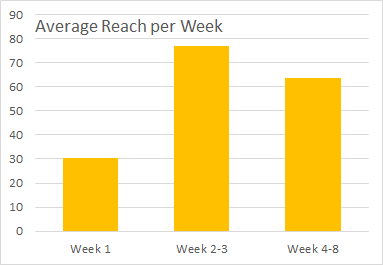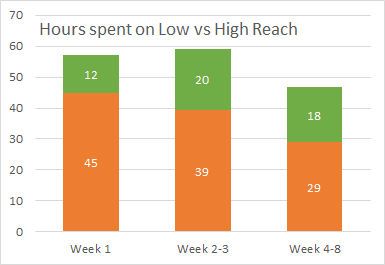I took a 2022 goal to be 10X more effective. In Jan, I managed 2X. Here’s how.
What is effectiveness?
I don’t know. I’m figuring it out.
But to start off, I measured the number of people my actions directly impact. For example:
- Discussing my Tools in Data Science Course or writing a blog post impacts ~500 people.
- Mailing all Gramener employees impacts ~200 people.
- Shopping with my wife impacts 2 people — her and me (in very different ways).
Clearly, the impact is not equal. But it’s a start.
How to measure it?
Since Dec 1, I categorized all my Outlook calendar entries into one of these categories:

Red is “low reach”. Green is “high reach”. This is what 6-10 Dec 2021 looked like:

I continued this for 8 weeks.
Did effectiveness increase?
In Week 1, I reached 30 people on average. This was the control week.
In Weeks 2-3, the reach increased from 30 to 77. In Weeks 4-8, it settled at 64.

So, yes, effectiveness increased. in Jan 2022, I reached twice as many people per week as when I started off.
I didn’t measure quality/impact. One-on-one coaching has more impact than a lecture. Reach is just a crude first approximation for effectiveness.
How did this happen?
What gets measured, improves. I’d categorize each entry on my calendar. This enabled 3 things:
- I’d try to remove low-reach (<50 reach – red) items. This reduced rom 45 to 29 hours a week.
- I’d try to add high-reach (>= 50 reach – green) items. This increased from 12 to 18 hours a week.

So, I now have 10 more hours of “me time” every week, while I still reach 2X as many people.
What next?
I’m exploring better measures of effectiveness. I believe:
- Effectiveness is goal alignment. It’s personal, and purely a function of your priorities.
- Effectiveness is multipled by assets. Actions that create assets improve effectiveness.
Once I discover a robust measure, I will to re-categorize my calendar and re-run this experiment.
If you use a measure of effectiveness of impact, please let me know — I’d love to learn from that.
Pingback: My Year in 2022 - S Anand